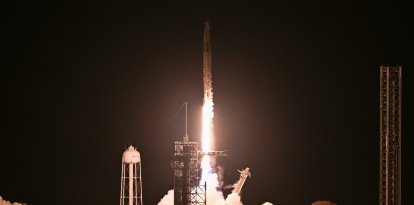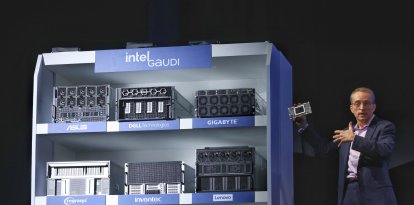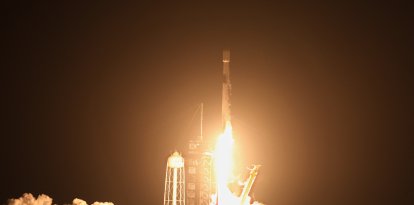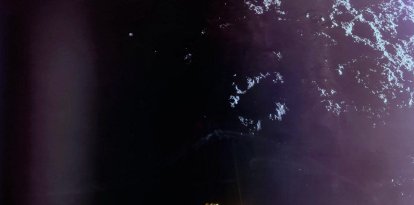NASA and Space X successfully launch new mission to the International Space Station
The technical problems detected earlier in the week by NASA have been solved, and the four astronauts will arrive at the I.S.S. on Friday.

(NASA)
NASA's Crew-6 mission has departed for the International Space Station. The launch, in collaboration with Elon Musk's Space X, was conducted at the agency's Florida facility. The four astronauts had to delay their departure earlier this week due to technical problems.
On Dragon Endeavour are NASA's Stephen Bowen and Warren Hoburg, mission commander and pilot, respectively, and specialists Sultan Alneyadi of the United Arab Emirates space agency and Andrey Fedyaev of Russia's Roscosmos. Their arrival at the International Space Station, where they will replace the crew currently there, is scheduled for early Friday morning.
NASA to conduct more than 200 experiments
Once aboard the station, Crew-6 will join Expedition 68, which consists of NASA astronauts Frank Rubio, Nicole Mann and Josh Cassada, as well as JAXA (Japan Aerospace Exploration Agency) astronaut Koichi Wakata, and Russian cosmonauts Sergey Prokopyev, Dmitri Petelin and Anna Kikina. For a brief period of time, the 11 crew members will live and work together in space until Crew-5 members Mann, Cassada, Wakata and Kikina return to Earth a few days later.
There, they will have no shortage of work, according to NASA Administrator Bill Nelson: "Crew-6 will be busy aboard the International Space Station, conducting over 200 experiments that will help us to prepare for missions to the Moon, Mars, and beyond, as well as improve life here on Earth. We look forward to seeing all that they accomplish."
International crew
The launch took place at the Kennedy Space Center at Cape Canaveral, Fla. at the scheduled time and without incident at 12:34 a.m. EST. After being boosted for eight minutes by a Falcon 9 rocket, Dragon Endeavour separated and began its space journey at more than 17,500 miles per hour.
Two delays due to technical problems
Kennedy Space Center Deputy Director Kelvin Manning was pleased with how the operation went. In statements to NASA TV, he highlighted all that can be achieved thanks to the alliance between the government, private industry and international partners.
The mission managed to depart after two postponements due to technical problems. Initially, everything was ready for the mission to take off last Sunday, but it had to be delayed for an additional thermal analysis of the panels on the outside of the capsule, as well as a check of some helium canisters on the Falcon 9 rocket. Tuesday, Feb. 28th's launch was also postponed due to poor weather conditions, pushing the launch back to last night.
RECOMMENDATION





















